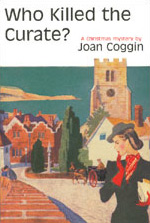“Constantinople was like an exotic dream full of spice and music and beauty—the scent of cardamom blew through the streets like a fresh wind—but at the same time, it had a distinct and surprising European feel.”
 Reading a Tasha Alexander book is simply pure pleasure. Four books into her series about Lady Emily Ashton—widowed in the first novel, now happily married in the fourth—she’s managed to keep her historical formula fresh by changing the location with each book. In the last, Lady Emily was in Vienna; in this novel, she’s in Constantinople visiting harems. Emily and her new husband, Colin Hargreaves, have made the journey to Constantinople on the Orient Express—a lavishly described journey that has one little hiccup in the form of Sir Richard St. Clare. Emily and Colin join Sir Richard for dinner one night, and he tells them his sad story—he lived a life of roaming adventure with his young family, until his wife was murdered and his young daughter kidnaped. His son is still living but Sir Richard’s desire to find his missing daughter has never dimmed. During the course of the dinner, Sir Richard passes out and must be removed from the dining car. The next day, he discovers some papers have been stolen, and Emily has a hard time forgetting his plight, though Colin does his best to get her to try. read more
Reading a Tasha Alexander book is simply pure pleasure. Four books into her series about Lady Emily Ashton—widowed in the first novel, now happily married in the fourth—she’s managed to keep her historical formula fresh by changing the location with each book. In the last, Lady Emily was in Vienna; in this novel, she’s in Constantinople visiting harems. Emily and her new husband, Colin Hargreaves, have made the journey to Constantinople on the Orient Express—a lavishly described journey that has one little hiccup in the form of Sir Richard St. Clare. Emily and Colin join Sir Richard for dinner one night, and he tells them his sad story—he lived a life of roaming adventure with his young family, until his wife was murdered and his young daughter kidnaped. His son is still living but Sir Richard’s desire to find his missing daughter has never dimmed. During the course of the dinner, Sir Richard passes out and must be removed from the dining car. The next day, he discovers some papers have been stolen, and Emily has a hard time forgetting his plight, though Colin does his best to get her to try. read more



